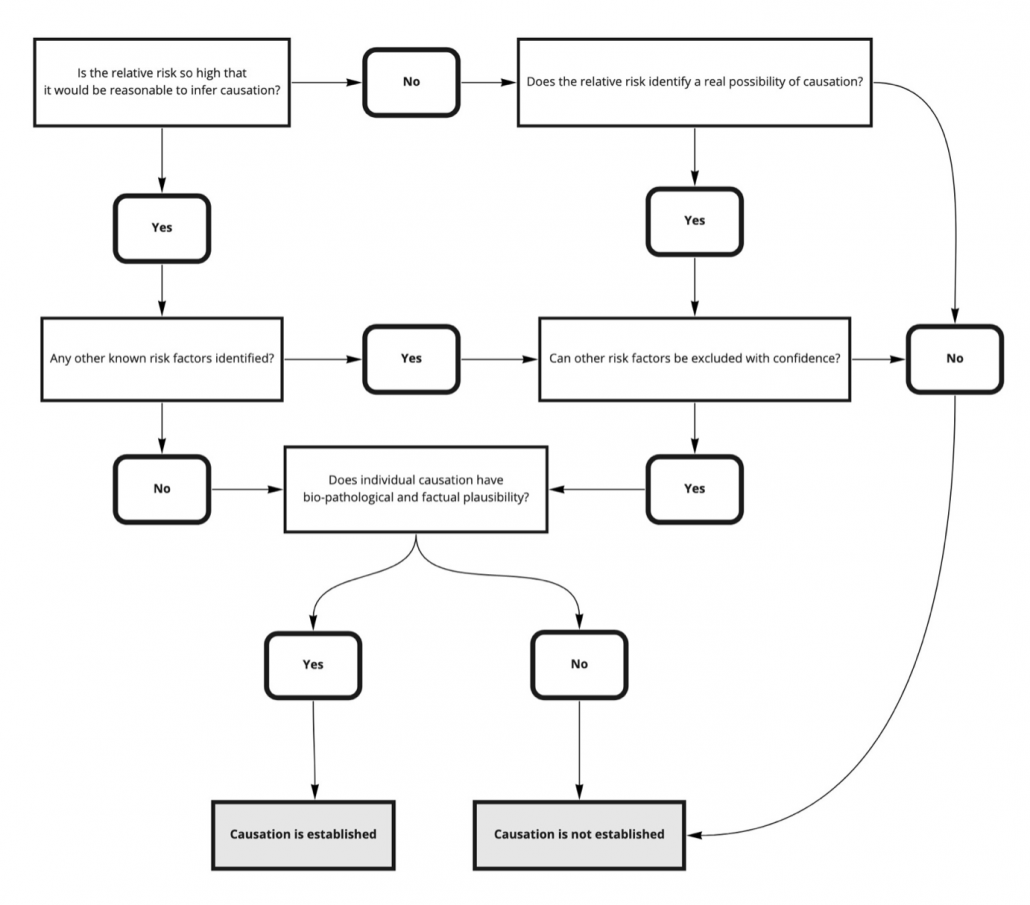Fundamental dishonesty: spin as law?
The most conspicuous development in 2024 in clinical negligence litigation has been the increasing tendency of Defendants to rely upon allegations of fundamental dishonesty, either as a defence to a primary claim or in related proceedings for contempt of court. Two cases in 2024, not cases of clinical negligence but nonetheless relevant to such litigation, saw judges dismiss actions for fundamental dishonesty in circumstances in which they assessed damages in very substantial sums. In April in Williams-Henry v. Associated British Ports Holdings Ltd, Mr Justice Ritchie assessed damages (before an agreed deduction for liability) at just under £900k. In July in Shaw v Wilde, Mr Justice Ritchie was trumped by His Honour Judge Sephton KC in July with £1.2 million.
Parliament is a law-making body. Given the prevalence of spin in politics, it is not surprising that spin is now being enacted into law. This can be seen in other contexts, for example a very specific law reflecting a named victim which has little overall practical effect, or the criminalising of conduct that is already criminal, such as upskirting and covering up child abuse.
Section 57 of the Criminal Justice and Courts Act 2015, which introduced the defence of fundamental dishonesty in personal injury litigation, results from the narrative of the insurance industry that fraud was a major and increasing problem against a background of rapidly increasing insurance premiums. Whilst the extent of fraud can be debated there can be no doubt that the civil justice system is well acquainted with dishonesty and has developed remedies which should deter such behaviour, including adverse costs orders and applications to commit to prison. The premise of Section 57 was that such remedies were not sufficiently adequate to deter fraud and that if a more Draconian remedy was available, this would have a positive effect on motor premiums.
Section 57 was presaged by a series of cases culminating in the decision of the Supreme Court in Summers v. Fairclough Homes Ltd. Defendants sought to argue that dishonesty in presentation could be sufficient in itself to amount to an abuse of process resulting in strikeout pursuant to CPR 3.4(2). In Summers, a Judge at first instance had found that a Claimant had grossly and dishonestly exaggerated his claim, . The Schedule had been pleaded at more than £800,000 but the Claimant was only awarded £88,716. The Supreme Court, disagreeing in principle with the Court of Appeal, considered that in an appropriate case a Court could strike out for dishonesty as an abuse of process, but this would require an exceptional case. Lord Clarke, giving the Judgment of the Supreme Court, had difficulty in identifying what might amount to an exceptional case. He tentatively identified a situation in which the Claimant’s damages were trivial compared with the claim as present
In the wake of Summers, Section 57 represented a positive outcome for insurers in the face of lobbying on their behalf and counter-lobbying by claimant representatives. Section 57 enjoins a Court to dismiss an action for fundamental dishonesty unless there is substantial injustice. Neither fundamental dishonesty nor substantial injustice are defined in the Act. This task was left to the judiciary.
In debate in the House of Lords, Lord Faulks indicated the Government’s approach as follows:
“Clause 45 (now Section 57) seeks to strengthen the law so that the dismissal of the entire claim should become the norm in such cases. However, at the same time, it recognises that the dismissal of the claim will not always be appropriate and gives the Court discretion not to do so where it would cause substantial injustice to the Claimant. To that extent, some of the remarks of my noble friend, Lord Marks, were entirely apposite. The clause gives the Court some flexibility to ensure that the provision is applied fairly and proportionately.”
The authorities to date have not identified a touchstone for fundamental. In Denzil v. Mohammed in 2023, Mr Justice Freedman suggested four principles had emerged .
First: “There is a danger about elaboration and metaphor. Otherwise, the Courts will be applying the elaboration and metaphors of previous Judgments, such that the words of the statute will fade into history and will not be applied.”
Secondly: “The statutory word ‘fundamental’ should be given its plain meaning.”
Mr Justice Freeman considered that expressions used in previous cases, such as “going to heart” or “substantially affecting the presentation of the case” might assist.
Thirdly: “The question of whether the dishonesty was sufficiently fundamental “should be a straightforward jury question.”
Fourthly , the Judge should conduct an exercise in considering the extent to which the dishonesty resulted in an inflated claim.
Overall, the impression is that for fundamental dishonesty there has to be a lot of dishonesty which has a big effect on the value of the claim. The only explicit exclusion of dishonesty so far in judicial guidance has related to collateral or incidental dishonesty. There is substantial judicial clear blue water between collateral and incidental and the type of extreme case seen in Williams-Henry and Shaw, where there was systematic and sustained dishonesty.
Defining substantial injustice has proved even more problematical. In one of the first cases considering, that is LOCOPG v. Sinfield in 2018, Julian Knowles J stated:
“Given the infinite variety of circumstances which might arise, I prefer not to try and be prescriptive as to what sort of facts might satisfy the test of substantial injustice. However, it seems to me plain that substantial injustice must mean more than the mere fact that the Claimant will lose his damages for heads of claim that are not tainted with dishonesty.”
Mr Justice Julian Knowles indicated that this was plainly the policy of the Act. Judges considering substantial injustice have accepted this approach. If the loss as occurred in Shaw v. Wilde of £1.2m in damages to a Claimant seriously injured by a Defendant’s breach of duty does not amount to a substantial injustice, it is difficult to envisage what might actually amount to the same. In Williams Henry, Mr Justice Ritchie suggested seven factors which could be taken into account in assessing substantial injustice. A number of these factors, however, would already be factored into a finding of fundamental dishonesty, such as the disparity between the amount claimed and the amount awarded or the scope and effect of the dishonesty. Others are of questionable relevance, such as the nature and culpability of the Defendant’s tort. Given that the focus of the Section is on the Claimant’s dishonesty, it is difficult to see why the level of breach of duty by the Defendant is relevant to substantial injustice. Mr Justice Ritchie considered, as did His Honour Judge Sephton KC, that the effect of the Claimant on the dismissal of the action could be relevant. In Williams v. Henry there was some evidence that the Claimant would become suicidal as a result of the dismissal of her action, but Mr Justice Ritchie considered that this situation would flow from own dishonesty. At present, it is difficult to envisage a situation in which a Judge having made a finding of fundamental dishonesty would consider that there was substantial injustice in dismissing the claim.
That experienced Judges have been unable to bring coherence to this area of the law reflects the origin of the Section in spin rather than legal principle. It is plausible to argue that more should be done about dishonesty in civil litigation, but nonetheless Courts should retain a discretion to let some dishonest Claimants off the Draconian sanction of striking out. However, this cannot be translated into coherent law.
Why does this matter? In Shaw v. Wilde, His Honour Judge Sephton KC concluded by stating that the Claimant only had himself to blame. The problem is in relation to advising Claimants who might not obviously satisfy the test of fundamental dishonesty or who might reasonably contest allegations of dishonesty notwithstanding there being some discrepancy in their presentation. The defence does not always succeed. In Cullen v. Henniker-Major, a Claimant, after being cross-examined for three and a half days, persuaded a Judge that she had not been dishonest. This Claimant had undergone a laryngectomy as a result of the Defendant’s failure to diagnose laryngeal cancer. Those advising Claimants have to tell them that where fundamental dishonesty is raised there is a prospect that they will have to give evidence over a prolonged period and that the Judge may ultimately dismiss the claim in its entirety. In these circumstances, many Claimants are held in terrorem. There is the added difficulty of maintaining funding in a market where funders require a significant degree of confidence to continue to support a Claimant.
The enactment of Section 57 will be 10 years old in April 2025. During that 10 year period, except for a brief respite during the pandemic, motor premiums have consistently risen.


